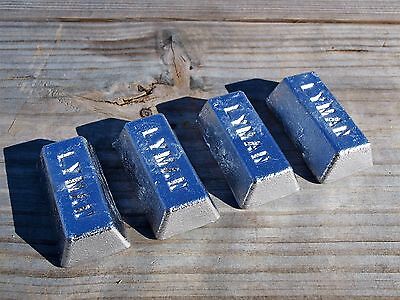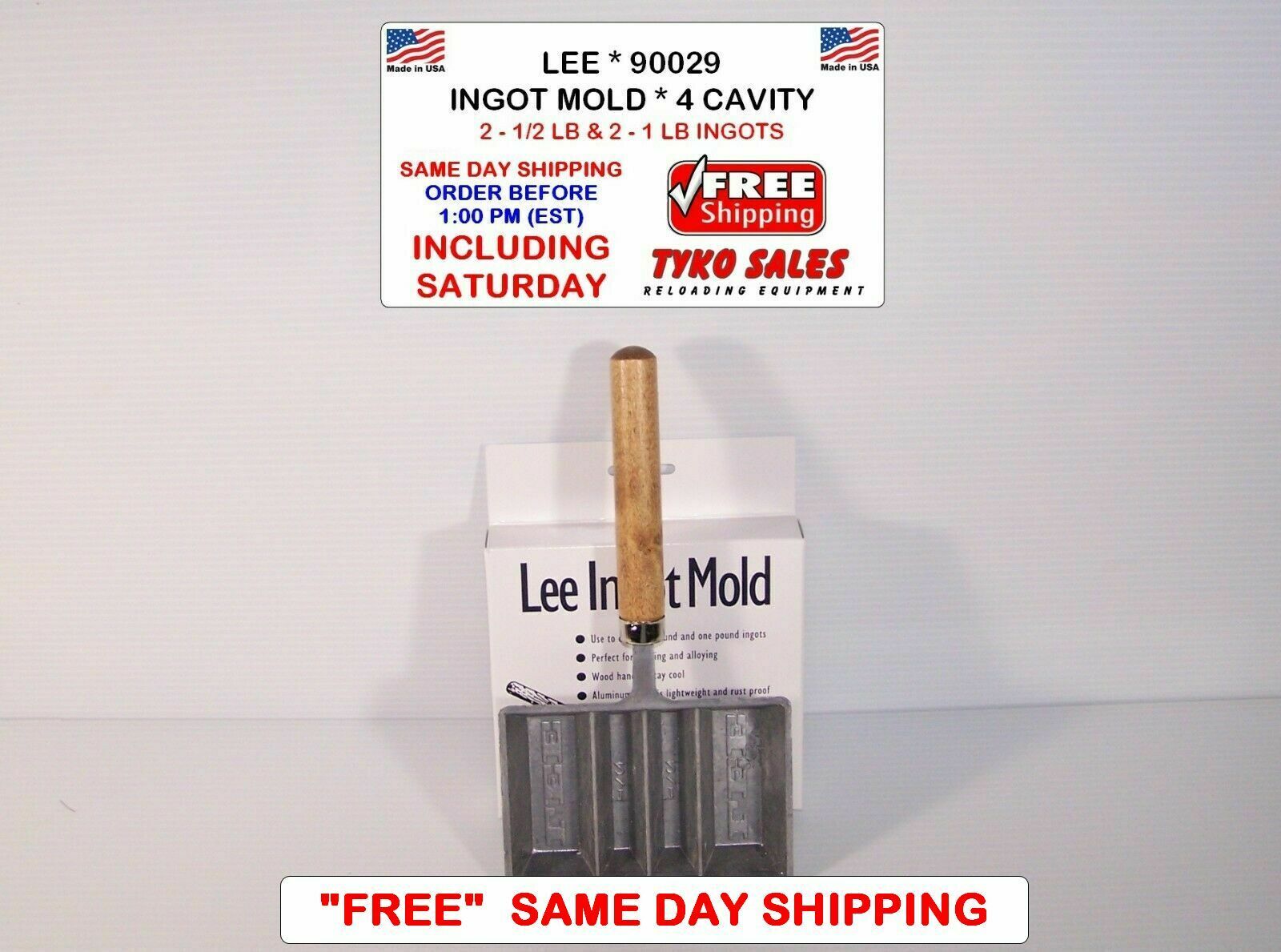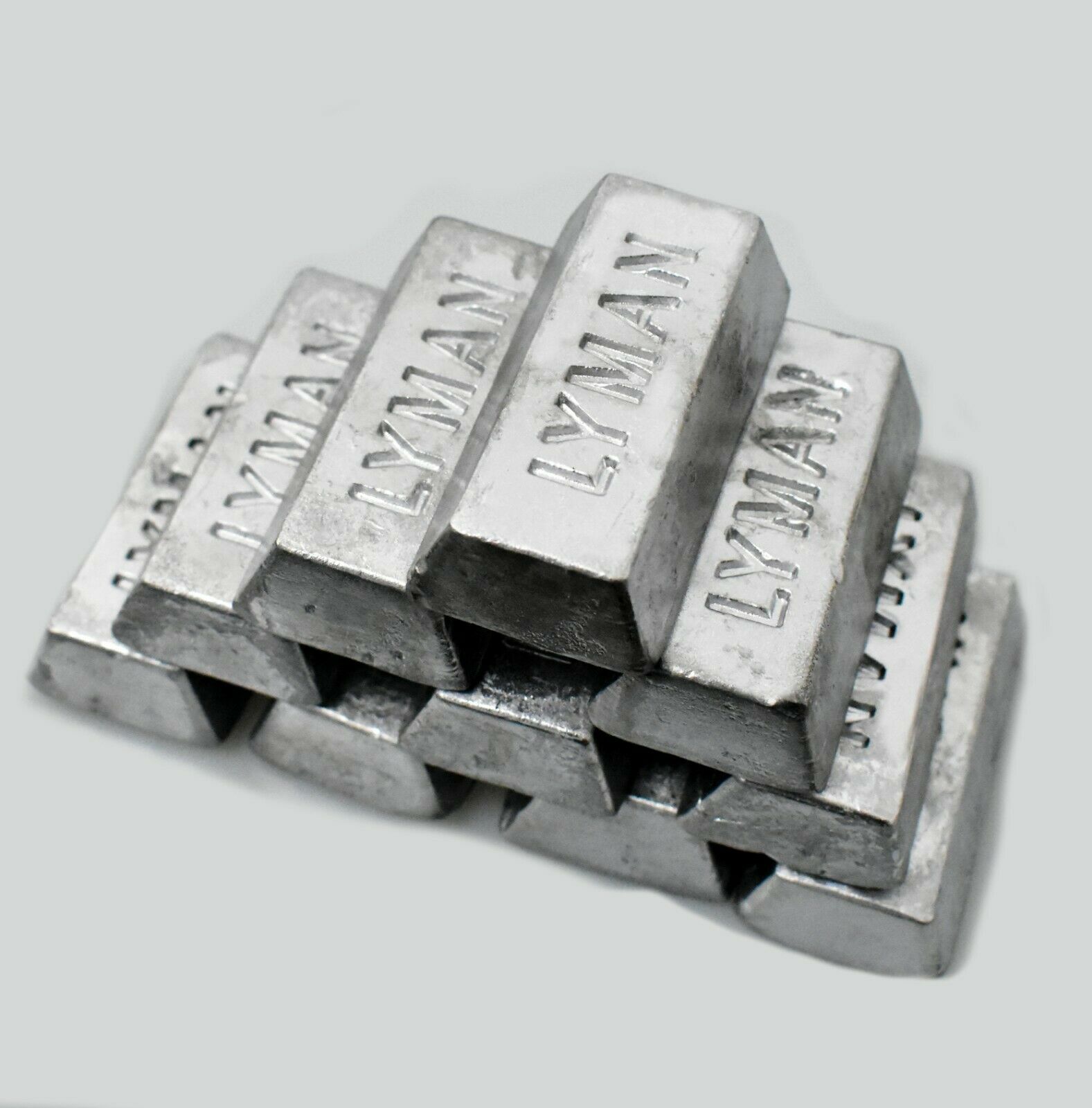-40%
Vintage HENSLEY & GIBBS #50 4-CAVITY BULLET MOLD WITH HANDLE, .38 CAL
$ 21.64
- Description
- Size Guide
Description
VINTAGE BULLET MOLD WITH HANDLES. THE MOLD IS MARKED HENSLEY & GIBBS 50, SAN DIEGO CAL.FOR REFERENCE THIS IS WHAT I FOUND FROM SOME ON-LINE THREADS:
From the Hensley & Gibbs factory ledger
:
#50 --.38
S&W
Special.
148 grains.
(Also .38 Gold Cup and Clark Conversions, which are usually sized smaller, at .356".)
Target pistol bullet.
Three rounded grease grooves, one crimp groove, small projection on tip, but still considered a "full-
wadcutter
" bullet.
A very popular design.
Available in plain and bevel base or gas check base.
Most of the time folks want to know how to tell a number 50 mould that can be used in .38 Special/.357
Mag
pistols from the number 50 moulds made for the .38 Gold Cup Clark Conversions.
The answer is usually easy. The number 50’s made for the Gold Cup Clark Custom conversions are usually stamped “.356” somewhere on the mould to indicate a diameter less than the normal as cast diameter of .358”. Conversely, if the mould is unmarked, meaning its just stamped “50” you may safely assume that this mould is a standard number 50 and was made to cast bullets for the .38 Special/.357
Mag
caliber pistols. (THIS ONE IS NOT STAMPED WITH THE .358 ANYWHERE I COULD FIND)
The reference alloy Hensley & Gibbs used to test their mould before shipment was Lyman #2 mix in case you were wondering.
From time to time, you may come across a Geo. A. Hensley, or a Hensley & Gibbs number 50 that sports “.359”, or “.360” and it may or may not have an “S” stamped on it (to indicate special order). And this is perfectly normal, as you may well remember from other articles I’ve written on Hensley & Gibbs, the customer was king, and whatever the customer wanted, the customer got. So if you wanted a number 50 wad cutter mould that cast .360 inch
wadcutters
for your old Model 10 Smith & Wesson, Hensley & Gibbs was more than willing to accommodate your request. And since their stampings on the moulds changed over the many years they were in production, I will try and identify what you can expect to see on a number 50 mould, and try and decipher the meaning.
This was the 1940’s & 50’s gents. Not too many ISO 900x operations existed at that time at Colt, Smith & Wesson to name just two. .38 caliber pistols had been in production since before the turn of the century and a lot of old pistols needed a larger bullet. I am sure that if you mailed George a slug hammered through your bore that George made you a nice tight fitting mould for your pistol and called it a day. And he may have stamped that oversize number 50 mould with
a
“S”, but I wouldn’t bet my life on it.
On with the identification
:
Let’s start with a 1939 era Geo. A. Hensley mould. The mould blocks might have this
:
50358148
And nothing more. Not even Geo. A. Hensley on the mould blocks. Why?
Because early on, George didn’t stamp his name on the mould blocks, only on the handles.
And when he stamped 50358148 that stamp decodes as:
50 = Design Number 50
358 = As Cast Diameter in thousands of an inch
148 = As Cast weight in grains
Fast forward to 1947:
The mould may be stamped:
50 Hensley & Gibbs San Diego CA
This means a standard number 50 whose diameter should be .358” when using Lyman #2 mix.
Fast forward again to 1965:
50 S Hensley & Gibbs Murphy Oregon
This means a special order #50 that probably has a design OR a weight change. The design change may be a missing button tip, which received its own design number years later. Or it may be a SIZE change, like #41. No
way to know until you cast a bullet out of Lyman #2, weigh
it and measure it.
Design #41 started off as a special order number 50 that had one lube groove removed (by running the cherry short into the blocks) to decrease the weight to about ~110~ grains to make a neat little gallery bullet. I have a 1940’s era two cavity
mould
stamped “50 S” and “110
grs
”. I’ve never seen its twin. Later, when more orders for that little gallery bullet came in, Hensley & Gibbs gave it its own design, #41. Why did 41 get a number lower than 50? Even I can’t answer that question. You would think 41 came out before 50 but I’ve been unable to prove or disprove the theory.
Same year
:
50BB Hensley & Gibbs Murphy Oregon
This means a standard number 50 in bevel base.
Same year
:
50GC Hensley & Gibbs Murphy Oregon
This means a standard number 50 in Gas Check (I’ve never seen one, actually, I’ve never seen a number 50 with a gas check but the ledger says they were available).
George Hensley, James Gibbs, and eventually Wayne Gibbs each worked and contributed to a somewhat constantly evolving nomenclature scheme for marking bullet moulds. You can see this evolution of markings from the earliest moulds to the last ones. George first started indicating special order moulds with an “S” to indicate that something was different about this mould (other than the standard design). Eventually, as indicated in a separate article I’ve written, Wayne stopped trying to mark the moulds with all the info (the
nitty
gritty details) and just put it on a two part invoice, and sent one copy to the customer and kept the other. The invoice’s serial number became the moulds serial number.
Easy
peasy
.
Match the serial number on the mould and find the invoice and you have the info. This worked as long as Hensley & Gibbs was in business and the customer was thoughtful enough to include the original factory invoice when he later sold that mould. Ahem.
When George partnered up with James Gibbs, and became “Hensley & Gibbs” they started stamping the blocks with the mould design number and “Hensley & Gibbs, San Diego CA”.
So many of those early Hensley & Gibbs moulds were stamped “50” and “Hensley & Gibbs San Diego CA”.
That’s it.
Nothing more.
Those moulds cast a .358” diameter bullet that weighed about 146 grains using Lyman #2 mix.
Based on my observations and measurements, more than 90% of moulds marked “50” cast the standard .358”
wadcutter
. And I’ve measured quite a few. The demand for special order number 50’s seemed to be few and far between, enough so that George, James, and Wayne made an effort to identify those special order moulds with a stamped “S” to indicated Special order.
As with rifle bores, the final word is casting and measuring with a known reference alloy, like Lyman #2
mix
.
PLEASE VIEW THE PHOTOS. THEY ARE PART OF THE DESCRIPTION. PLEASE ASK ANY QUESTIONS YOU MAY HAVE BEFORE YOU BID OR BUY IT SINCE WE WANT YOU TO BE HAPPY WITH YOUR PURCHASE.
SHIPPING
: TO
US
BUYERS VIA USPS MAIL IS .00.
THIS MOLD IS HEAVY AND LONG, IT WEIGHS BETWEEN 2-3 LBS AND IS A LITTLE OVER A FOOT LONG SO SORRY FOR THE HIGH SHIPPING COST.
WE NO LONGER WILL SHIP OVERSEAS OR INTERNATIONAL.
LOCAL PICK UP CASH NO SHIPPING CHARGE.
EBAY COLLECTS SALES TAX AS APPROPRIATE BY INDIVIDUAL STATES.
6418


















